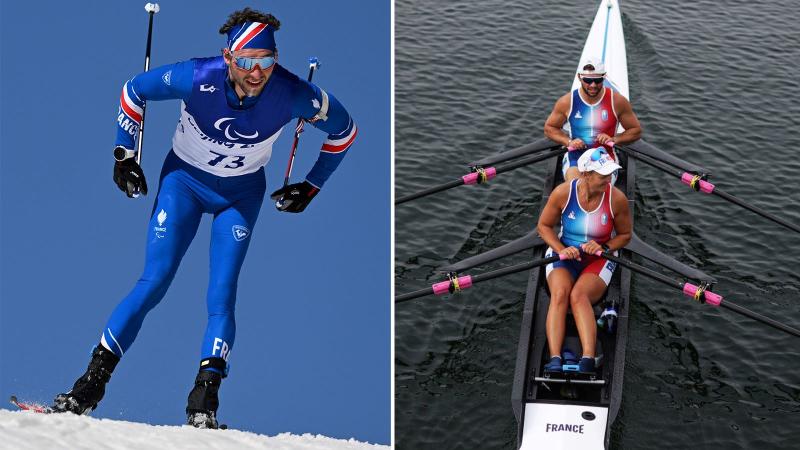Paralympic Sports A-Z: Rowing
Find out all you need to know about the Paralympic sport of rowing, including the history, rules, classification and equipment.
For more info go to:
Rowing will make its third appearance in a Paralympic Games after debuting at Beijing 2008. Athletes race over 1,000 meters on flat water in boats that vary in length and crew size.
Rio 2016 will feature four medal events: LTAMix4+ (LTA mixed coxed four), TAMix2x (TA mixed double sculls), ASW1x (AS women's single sculls) and ASM1x (AS men's single sculls).
ASW1x/ASM1x – athletes predominantly use the arms and/or shoulders for rowing
This arms-only event is crewed by a single rower racing a boat that has an attached pontoon for stability and a fixed seat. Here, athletes row with two oars (known as sculling, using one oar on each hand) and are attached to the seat in such a way that only their arms are available for propulsion. The strapping method used is designed and monitored to ensure all rowers use only their arms in this class.
TAMix2x – athletes use trunk and arms for rowing
Rowers who are able to use their trunk and arms compete in this mixed double sculls event, with two-person crew (one male and one female) competing in a standard Olympic double boat. These rowers are unable to use sliding seats and are attached to their fixed seat via strapping. Both rowers in this event use two oars and the sculling technique. However, boats in this class do not have the additional buoyancy pontoons.
LTAMix4+ -- athletes use their legs, trunk and arms for rowing
Unlike the previous three events, the mixed coxed four uses a sweeping method in which athletes hold one oar with two hands. Rowers here use a standard boat with sliding seats. Each rower in this crew has one oar and “sweep” rather than “scull.” The crew must consist of two male and two female rowers, and a male or female coxswain (responsible for steering the boat) who does not have to have an impairment.
The 1,000m course is raced head-to-head with the winner progressing to the next round. Depending on the competition and number of entries, boats ranked second and third in the initial head-to-head heats may progress to repechages and then finals. The exact format for the progression of boats from head-to-head heats is decided at each competition based on entries.
The sport is governed by the International Rowing Federation (FISA).

 Facebook
Facebook
 Instagram
Instagram
 Twitter
Twitter
 Youtube
Youtube
 TikTok
TikTok
 Newsletter Subscribe
Newsletter Subscribe


